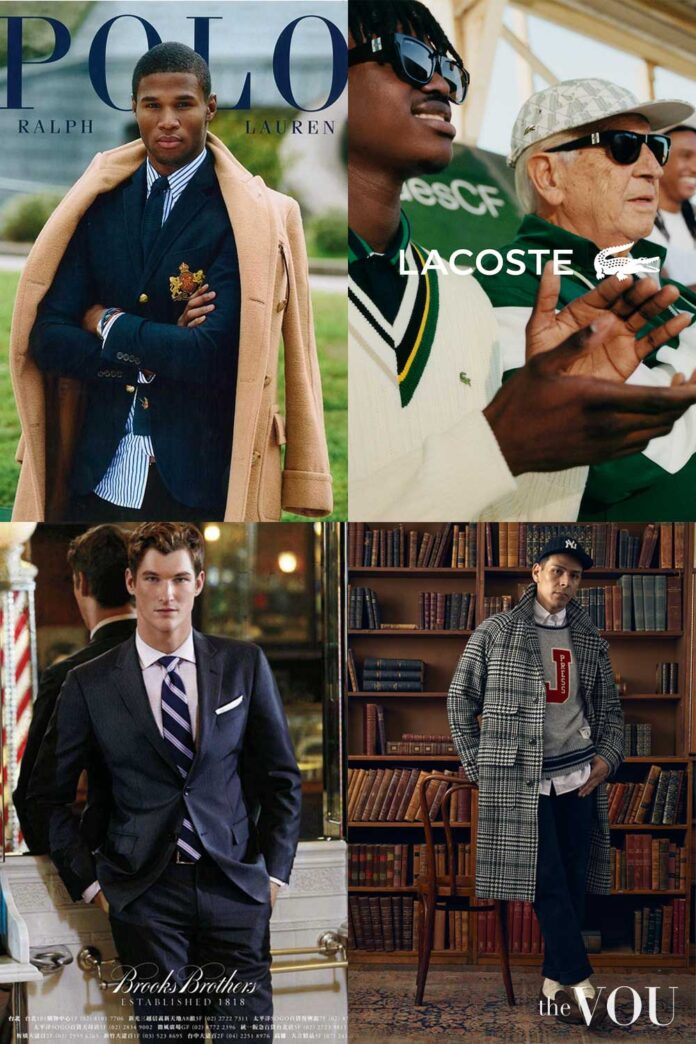The Importance of Sustainable Clothes: How It Influences the Setting and Your Storage room
Sustainable clothes is progressively recognized for its important duty in lessening the ecological impact of the rapid garment industry. By concentrating on green materials and ethical production techniques, it attends to pushing eco-friendly concerns. This change not only benefits the earth however likewise influences customer choices, causing an extra thoughtful technique to closet monitoring. Understanding these characteristics raises necessary concerns about style's future and personal duty fit it.
The Environmental Footprint of Rapid Fashion

Advantages of Sustainable Materials
Lasting materials offer significant benefits, particularly through green material options that reduce environmental injury. These products also show toughness and durability, lowering the requirement for frequent substitutes. Because of this, they add to a more lasting fashion industry and advertise accountable customer habits.
Eco-Friendly Material Selections
While the fashion sector has actually long been connected with rapid fads and environmental injury, the increase of environment-friendly textile selections provides a transformative opportunity. Lasting materials such as organic cotton, hemp, and Tencel have actually gotten popularity as a result of their lower eco-friendly impact. These materials are typically generated without unsafe pesticides and need much less water, reducing their carbon footprint - Branded Clothing. Furthermore, several environmentally friendly textiles are naturally degradable, adding to a circular economic climate by decreasing waste. Picking sustainable materials not only supports ecologically responsible practices but additionally advertises much healthier ecological communities. As customers end up being more knowledgeable about their purchasing power, the need for environment-friendly textiles motivates brand names to innovate and take on even more lasting production methods, eventually profiting the earth and future generations
Resilience and Durability Advantages
Lots of consumers are progressively acknowledging the toughness and longevity benefits of sustainable materials in their clothes options. Unlike traditional materials, sustainable materials such as organic cotton, hemp, and recycled polyester are engineered to endure deterioration, leading to garments that last longer. This decreased frequency of replacement not only saves customers cash with time yet likewise decreases waste created by rapid style. Furthermore, sustainable clothes typically utilizes environment-friendly manufacturing methods that boost textile toughness, adding to a reduction in the overall carbon impact. By purchasing long lasting garments, consumers can grow an extra sustainable wardrobe while delighting in high-quality items that preserve their aesthetic and performance over time. Consequently, longevity and long life stand as crucial benefits of choosing lasting products.
Minimizing Waste With Sustainable Practices
Lowering waste in the apparel industry can be accomplished through ingenious practices such as upcycling and repurposing products. In addition, adopting minimalist closet techniques motivates consumers to prioritize top quality over quantity, eventually lowering clothing usage. With each other, these methods add greatly to a much more lasting clothing design.
Upcycling and Repurposing Materials
Upcycling and repurposing materials have actually emerged as cutting-edge methods in the apparel industry, changing discarded textiles right into useful new items. This technique not just minimizes waste however additionally encourages imagination and originality in clothing style. By taking old garments and products, designers can produce special items that reflect individual style while lowering the need for new resources. In addition, upcycling frequently needs much less energy and water compared to traditional manufacturing processes, significantly reducing the environmental footprint of fashion. As customers come to be more aware of sustainability, the popularity of upcycled clothes remains to increase, promoting a circular economic climate. Inevitably, these techniques add to an extra lasting future, where style focuses on environmental wellness over rapid manufacturing and usage.

Minimalist Wardrobe Methods
As individuals progressively seek to minimize their environmental influence, taking on minimal wardrobe strategies has obtained grip as an efficient method to sustainable style. These approaches highlight high quality over amount, motivating consumers to curate a smaller collection of functional, long lasting garments. By concentrating on timeless items that can be mixed and matched, people can minimize the frequency of acquisitions and eventually decrease waste.Additionally, minimalism advertises mindful consumption, prompting customers to mirror on the ethical and ecological effects of their selections. This technique not only cultivates an extra sustainable way of living however also streamlines daily decision-making regarding clothing. As people embrace minimalist principles, they add to a style culture that values sustainability and liable consumerism, inevitably causing a more eco-conscious society.
The Role of Honest Labor in Lasting Fashion
While numerous consumers are increasingly knowledgeable about the environmental repercussions of their garments options, the significance of ethical labor techniques in sustainable style can not be ignored. Ethical labor includes reasonable incomes, risk-free working conditions, and regard for workers' rights, creating the backbone of accountable fashion production. Brand names that prioritize honest labor not just boost communities however additionally set a standard for liability in the industry.Moreover, the assimilation of ethical methods cultivates openness, enabling consumers to make educated selections about their purchases. This method contrasts dramatically with fast fashion's exploitative labor designs, which often prioritize profit over people. By sustaining business devoted to moral labor, customers contribute to a system that values human dignity alongside environmental sustainability. Moral labor is not just an add-on; it is crucial to the more comprehensive objective of sustainable fashion, making certain that the pursuit for eco-friendliness does not come at the expenditure of human legal rights.
The Impact of Lasting Garments on Carbon Emissions
Sustainable apparel has the prospective to significantly reduce carbon emissions related to the garment industry. Typical garment production adds significantly to greenhouse gas emissions, largely because of energy-intensive manufacturing procedures and the usage of non-renewable resources. In comparison, sustainable fashion concentrates here on green products, such as organic cotton or recycled fibers, which usually need much less energy to produce.Moreover, sustainable brand names tend to take on much more reliable manufacturing techniques, lessening waste and lowering general exhausts. By focusing on longevity and ageless layout, lasting apparel encourages customers to get much less frequently, further reducing the carbon footprint associated with overconsumption.Additionally, many lasting brand names are committed to openness in their supply chains, making it possible for customers to make enlightened selections that straighten with their values. Ultimately, shifting towards sustainable apparel can lead to a significant decrease in carbon discharges, contributing to a much healthier planet and a much more lasting future for the style industry.
Supporting Regional Economies With Sustainable Choices
The change toward sustainable clothes not only addresses ecological concerns but likewise considerably benefits regional economic climates. By selecting lasting style, customers usually sustain neighborhood craftsmens and local business, enhancing community resilience. These enterprises usually run on a smaller sized range, focusing on workmanship and moral techniques over mass production.Investing in locally made lasting garments cultivates work production and promotes financial growth within neighborhoods. As consumers end up being extra familiar with the ecological effect of their purchases, they progressively choose products that reflect their worths. This demand urges local makers to embrace sustainable methods, contributing to a round economy.Moreover, supporting local companies reduces transport discharges, aligning with eco-conscious customer habits. The interconnectedness of sustainable apparel and neighborhood economic situations highlights the vital role that specific options play in promoting both ecological and economic wellness. By promoting these regional connections, neighborhoods can thrive while additionally working in the direction of a much more lasting future.
Transforming Your Closet: Tips for a Sustainable Closet
As individuals look for to decrease their ecological effect, transforming a wardrobe into a lasting wardrobe ends up being a necessary step. One reliable technique is to evaluate existing garments, keeping only things that are used routinely and that line up with sustainability goals. Prioritizing top quality over amount is important; buying sturdy pieces from green brands can greatly decrease waste.Additionally, integrating used items can rejuvenate a closet while lessening ecological damages. Organizing apparel swaps with friends or donating extra products can better advertise sustainability.When shopping, individuals ought to seek products that are natural, recycled, or eco-friendly, and prevent rapid style retailers - Branded Clothing. Finally, practicing mindful usage by thoughtfully thinking about each acquisition can add to an extra sustainable lifestyle. By executing these ideas, one can develop a closet that mirrors individual design while sustaining ecological stewardship
Frequently Asked Concerns
Just How Can I Recognize Lasting Apparel Brands?
To recognize lasting garments brand names, one must look into products utilized, look for qualifications like Fair Profession, and examine the brand name's transparency regarding their production procedures, labor methods, and environmental impact, guaranteeing eco-friendly and moral methods are prioritized.
What Are the Prices Related To Sustainable Fashion?
The costs related to lasting fashion can differ significantly. Higher manufacturing costs, ethical sourcing, and green materials frequently lead to raised click here for more retail costs, which might prevent some consumers while attracting environmentally aware consumers.
Can Lasting Apparel Be Elegant and Trendy?
Lasting clothing can undoubtedly be stylish and stylish. Designers increasingly focus on innovative materials and moral production techniques, proving that fashion and sustainability can exist together. Customers now have diverse choices that blend visual appeals with ecological consciousness.
Just How Does Washing Clothing Affect Their Sustainability?
Cleaning clothing substantially effects sustainability by consuming water and power, adding to air pollution, and triggering microplastic launch. Frequent washing can weaken fabrics, reducing their life-span and enhancing the requirement for replacements, ultimately intensifying environmental issues.
What Is the Lifespan of Sustainable Garments Contrasted to Rapid Style?
The lifespan of sustainable clothing commonly surpasses that of fast style products, typically enduring a number of years because of top quality materials and workmanship. On the other hand, fast fashion garments might deteriorate promptly, requiring more constant substitutes. Sustainable clothing is increasingly acknowledged for its essential duty in decreasing the ecological influence of the quick fashion market. While numerous customers are progressively conscious of the environmental repercussions of their clothing selections, the importance of honest labor methods in lasting fashion can not be ignored. click site Branded Clothing. Lasting apparel has the possible to greatly lower carbon exhausts linked with the style market. In contrast, sustainable style concentrates on green products, such as organic cotton or recycled fibers, which typically need much less energy to produce.Moreover, lasting brands tend to take on extra reliable manufacturing techniques, lessening waste and lowering total discharges. By prioritizing longevity and ageless design, lasting apparel urges customers to acquire less regularly, additional lowering the carbon footprint linked with overconsumption.Additionally, numerous lasting brands are dedicated to transparency in their supply chains, allowing customers to make educated selections that align with their worths